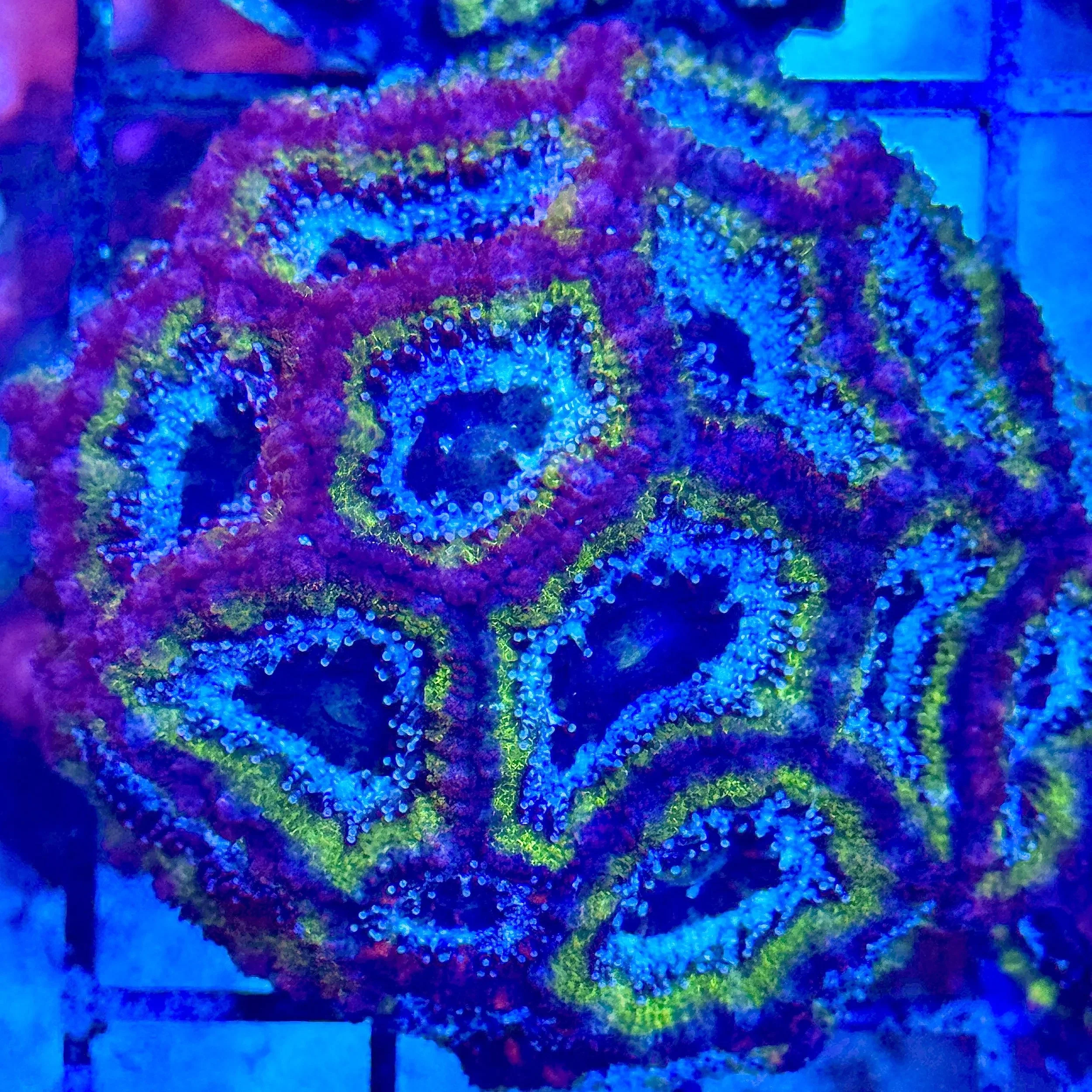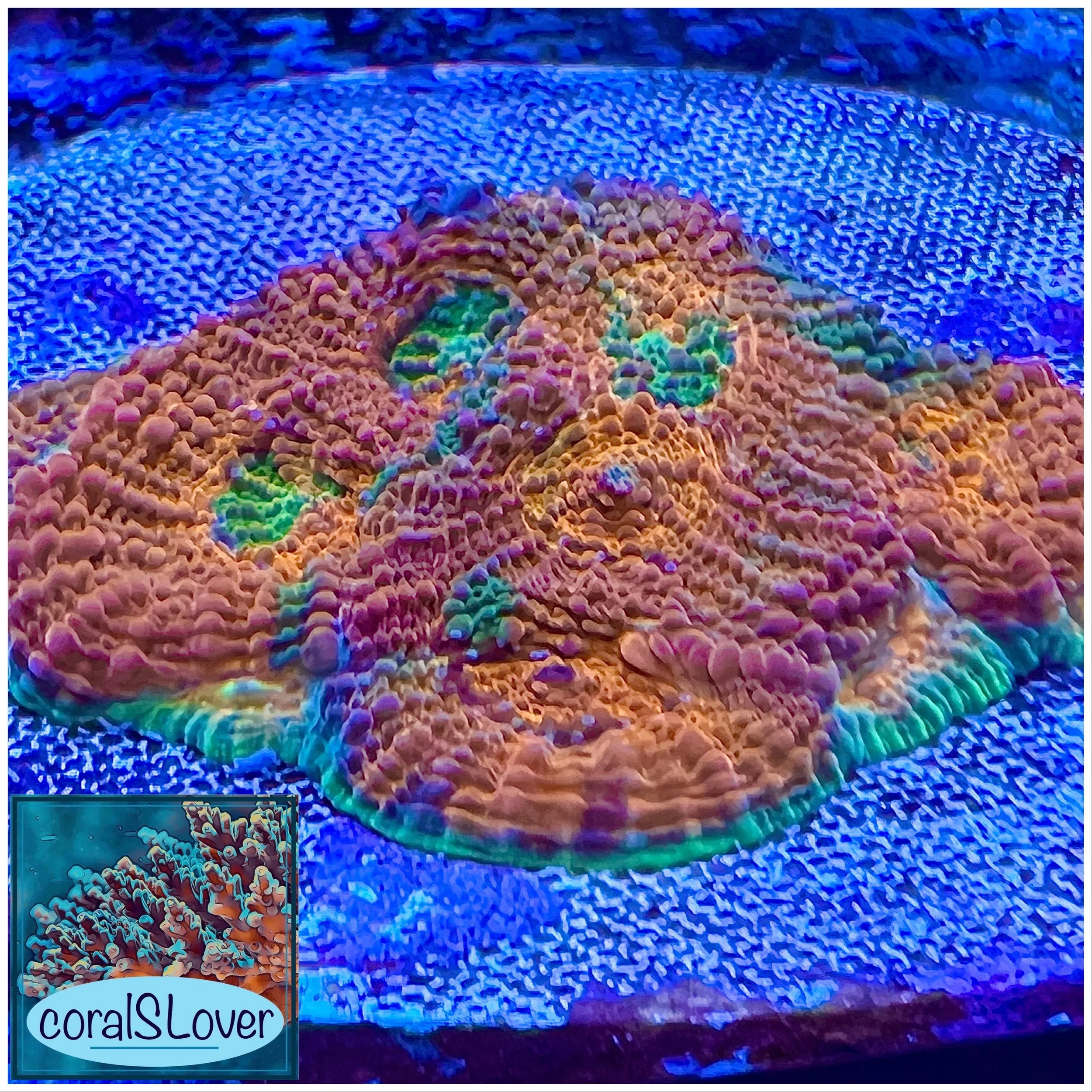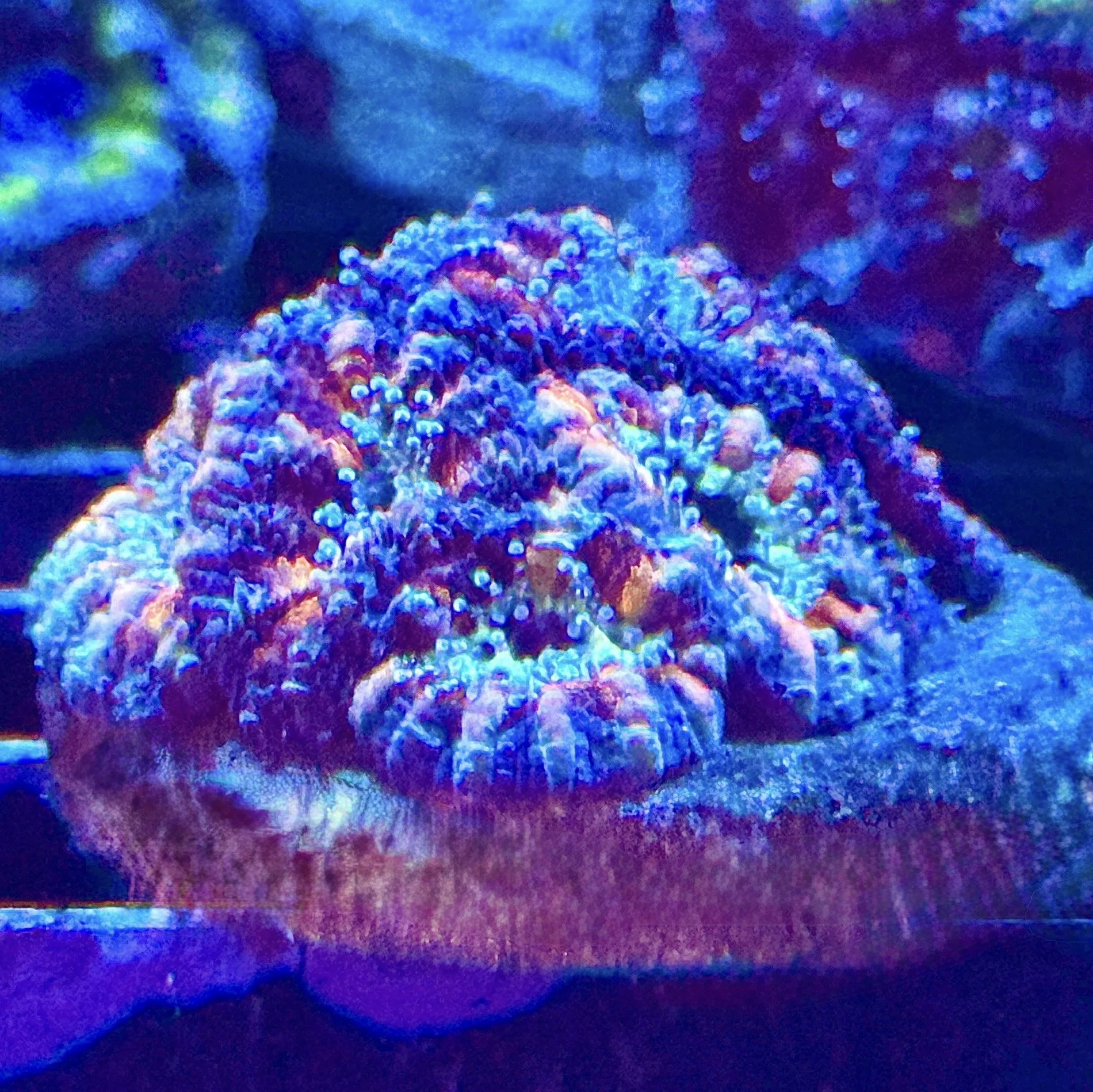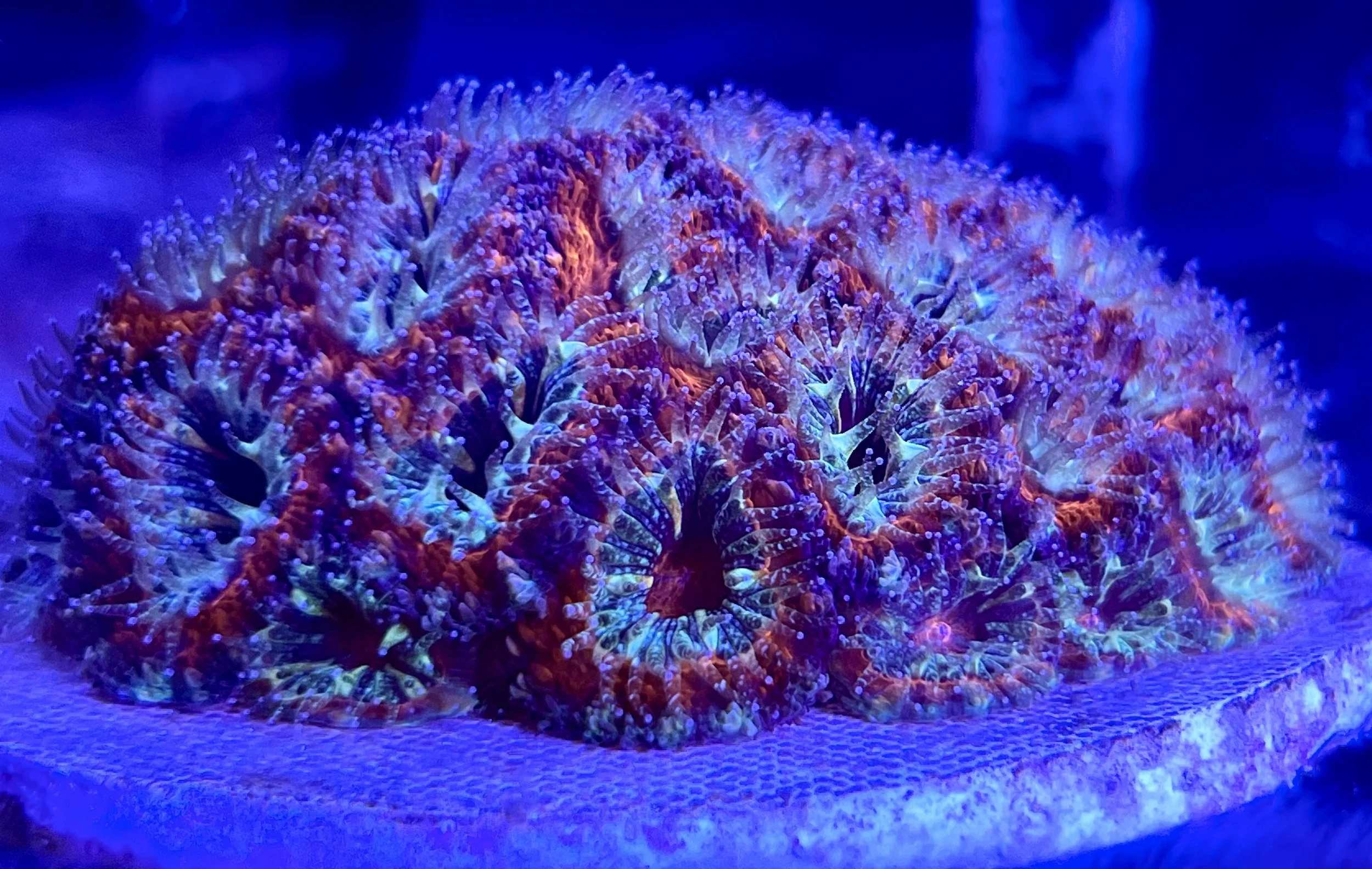 Image 1 of 16
Image 1 of 16

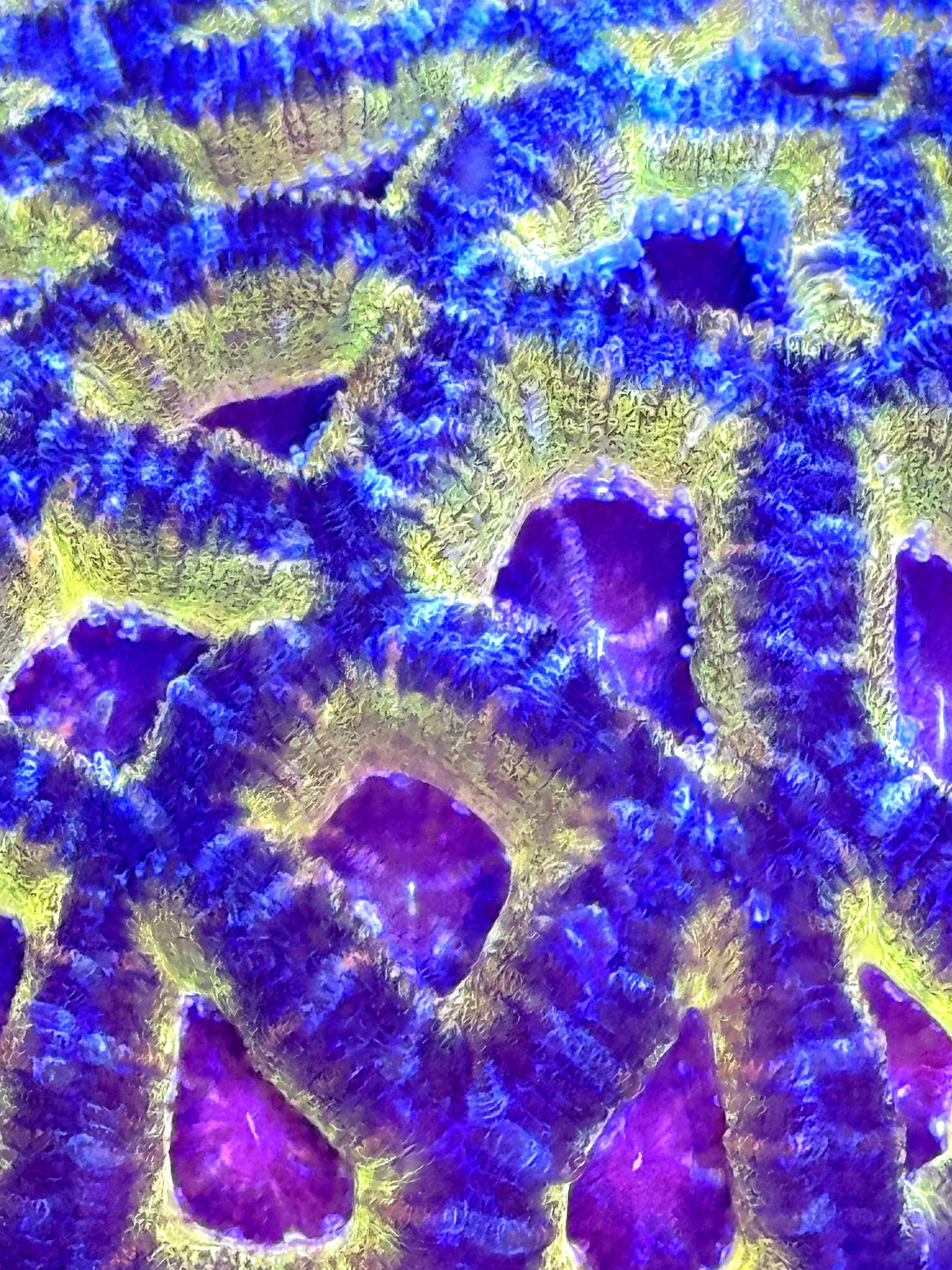 Image 2 of 16
Image 2 of 16

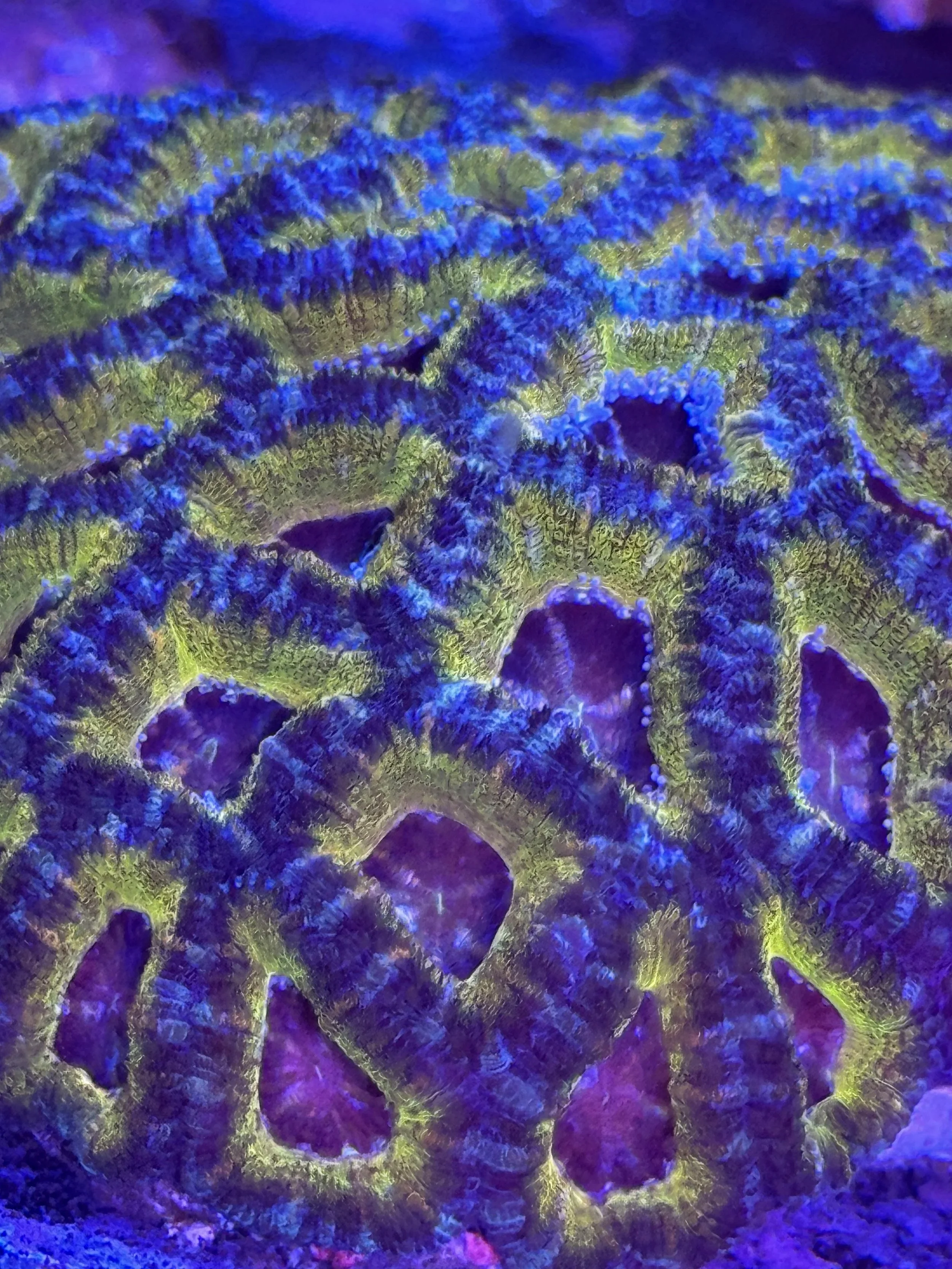 Image 3 of 16
Image 3 of 16

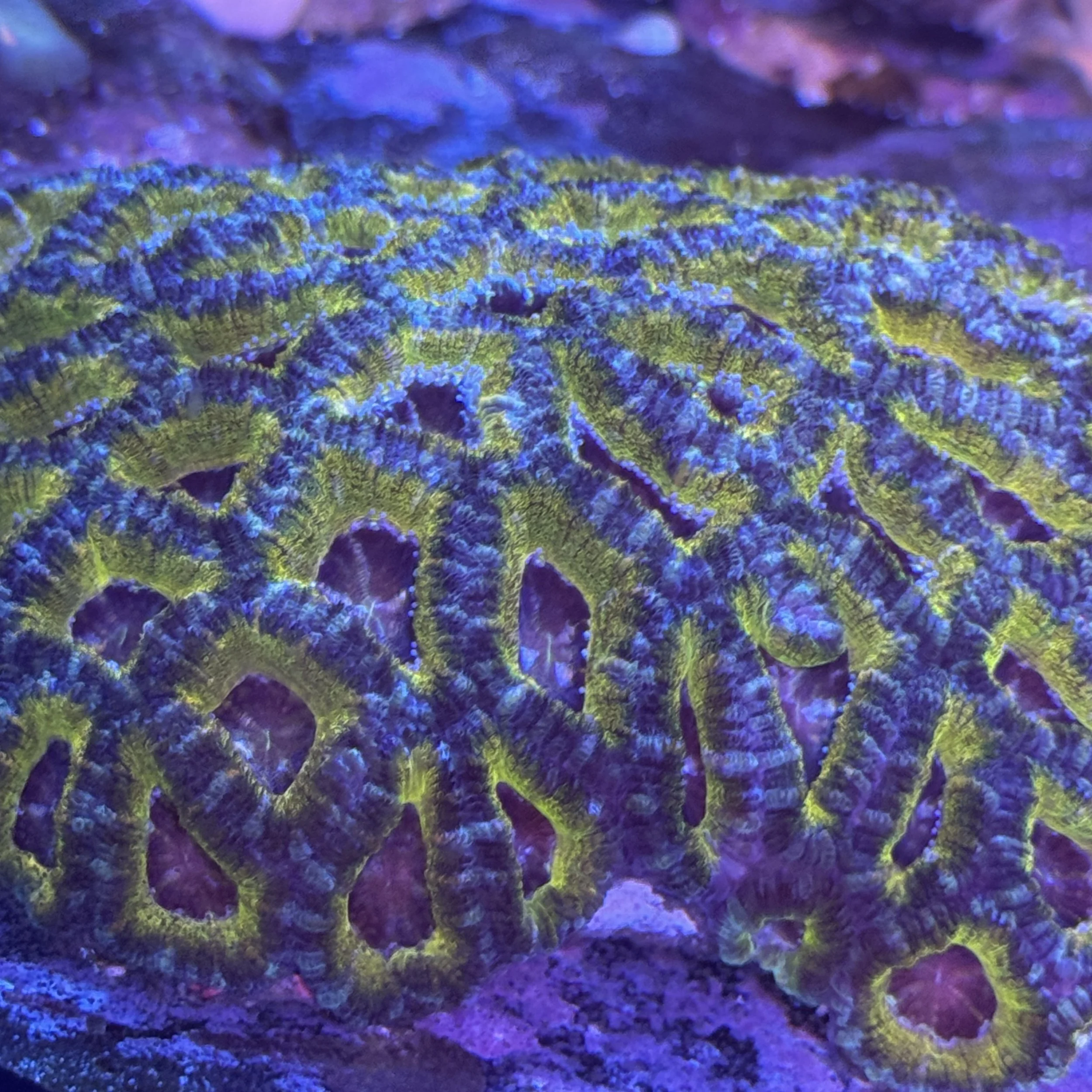 Image 4 of 16
Image 4 of 16

 Image 5 of 16
Image 5 of 16

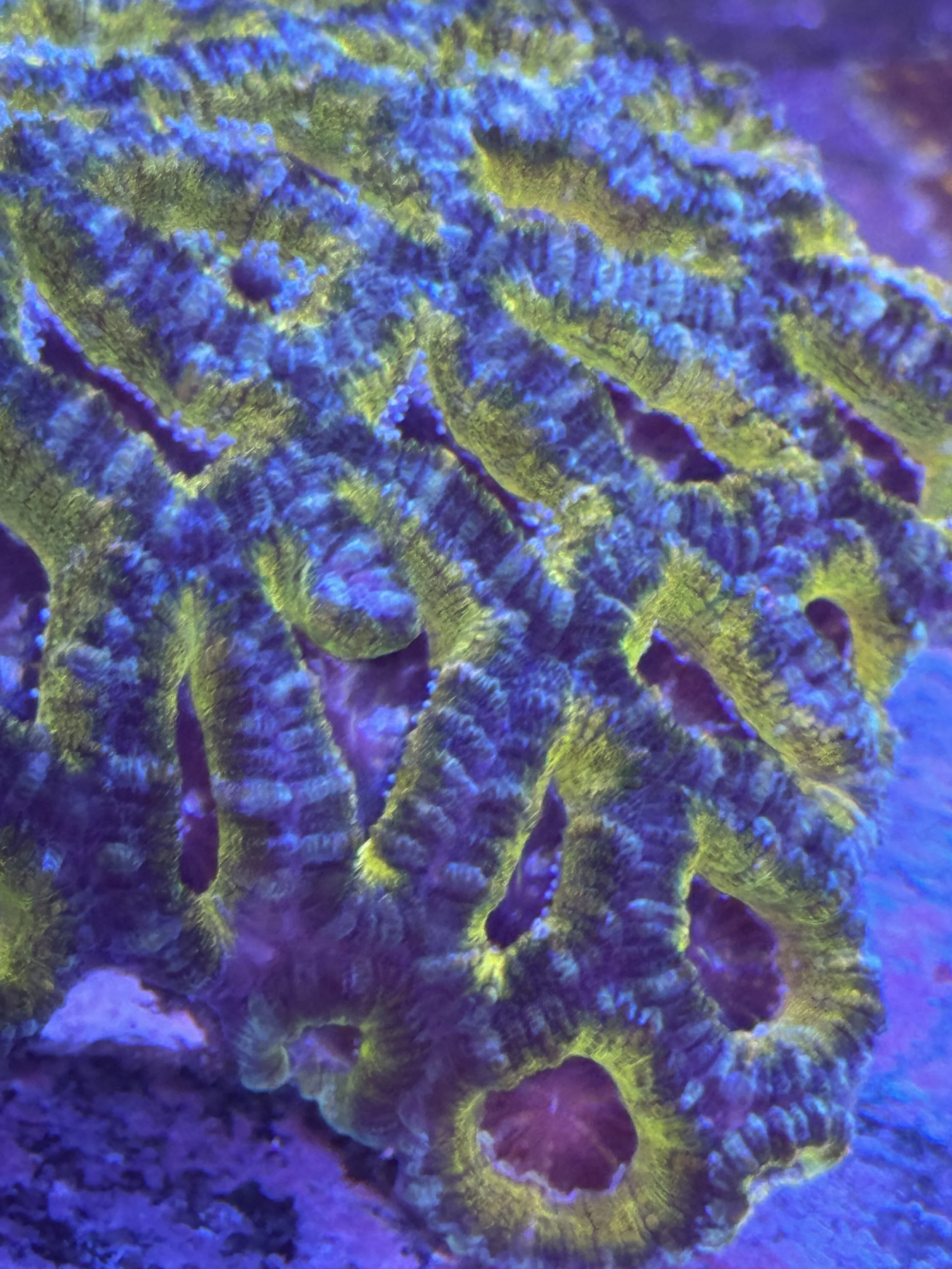 Image 6 of 16
Image 6 of 16

 Image 7 of 16
Image 7 of 16

 Image 8 of 16
Image 8 of 16

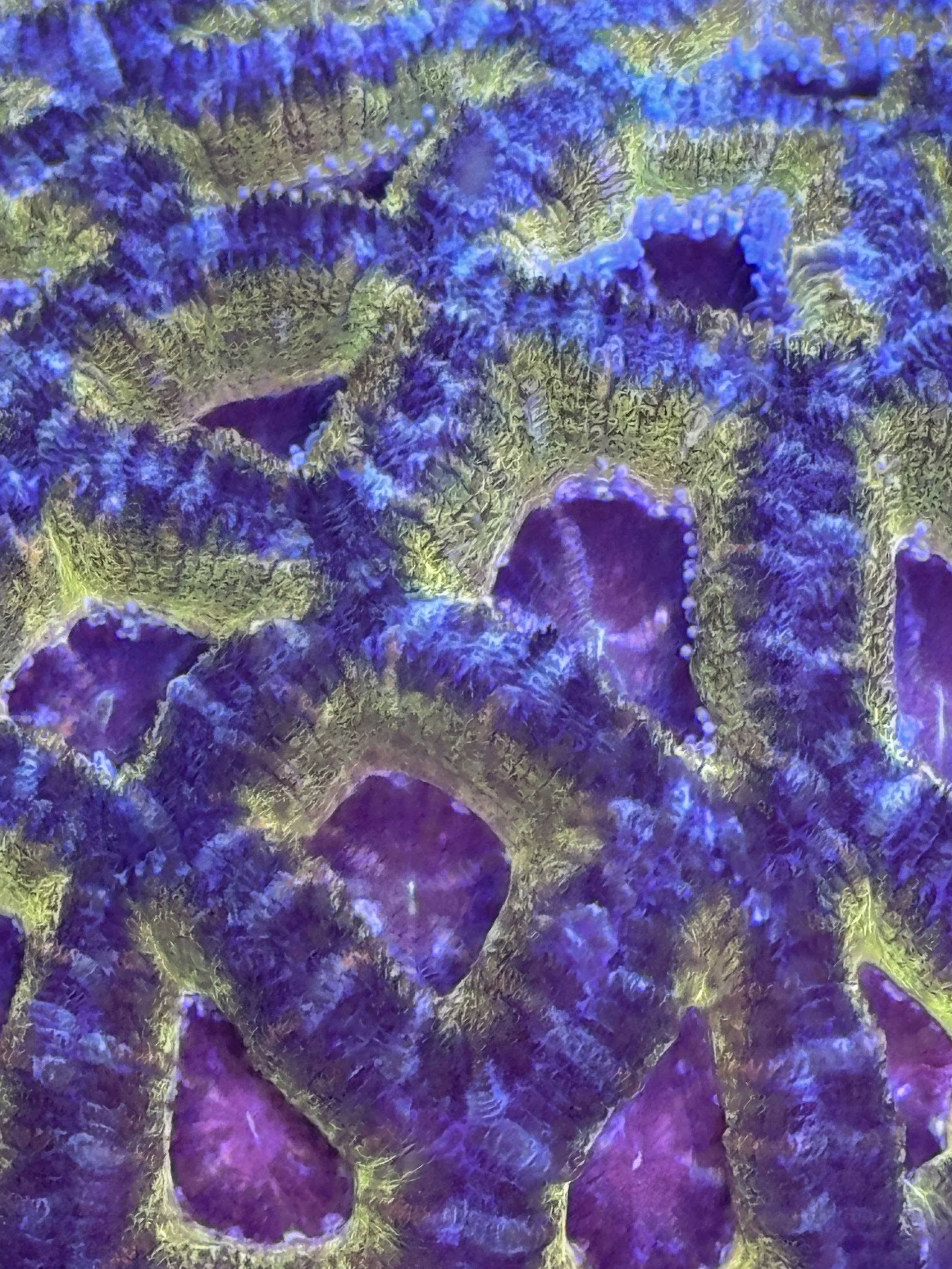 Image 9 of 16
Image 9 of 16

 Image 10 of 16
Image 10 of 16

 Image 11 of 16
Image 11 of 16

 Image 12 of 16
Image 12 of 16

 Image 13 of 16
Image 13 of 16

 Image 14 of 16
Image 14 of 16

 Image 15 of 16
Image 15 of 16

 Image 16 of 16
Image 16 of 16

















24K Gold Ring Lord Acan Live Aquaculture LPS Coral
24K Gold Ring Acan Lord – Live Aquaculture LPS Coral | coralSLover®
Classification: High-End LPS Coral (Acanthastrea lordhowensis)
Type: Large Polyp Stony Coral | Aquacultured | 1.5”+ Frags | Zero Wild Collection
The 24K Gold Ring Acan Lord is one of the most visually breathtaking LPS corals in the reef hobby, celebrated for its rich metallic golden rings that radiate from a deep crimson-to-purple base. Each fleshy polyp forms a luminous ring pattern resembling molten gold under actinic or blue LED lighting, creating an unmistakable glow that enhances any reef aquarium.
This coral’s unique color morphology results from high concentrations of fluorescent proteins and pigments that reflect yellow and red wavelengths, producing a vibrant shimmer effect under both daylight and reef-spectrum lighting. At coralSLover®, our aquacultured lineage of this morph has been selectively propagated for color stability and robust growth.
Scientific Information
Genus: Acanthastrea
Species: Acanthastrea lordhowensis
Family: Lobophylliidae
Common Names: Acan Lord, Lord Coral, Micromussa Lord, 24K Gold Ring Acan
Coloration: Golden-yellow rings with deep red, purple, and orange base tones; turquoise highlights may appear under actinic lighting.
Polyp Structure: Large, fleshy polyps forming distinct concentric rings with visible septal ridges.
Symbiosis: Contains Symbiodiniaceae (zooxanthellae) for photosynthesis.
Growth Form: Colonial—new polyps bud laterally from a shared skeletal base.
Reproduction: Asexual budding and tissue expansion; capable of forming dense colonies over time.
Care & Placement for Lord Acan
Lighting: Moderate; spectrum between 10,000K and 20,000K. Golden pigments fluoresce brightest under actinic or blue lighting.
Flow: Low to moderate; strong currents can cause tissue recession.
Placement: Mid-to-lower reef zones with ample spacing from aggressive species; polyps extend at night for feeding.
Feeding: While primarily photosynthetic, Acan Lords benefit greatly from target feeding with meaty foods such as mysis shrimp, reef roids, or fine coral blends 2–3× per week.
Growth Behavior
Under stable water chemistry and moderate light, this coral exhibits steady growth, forming cohesive colonies with multiple heads. The fleshy tissue expands dramatically during feeding periods and retracts slightly at night. Over time, colonies form undulating, dome-like structures that accentuate their intricate color gradients.
Scientific Background
Acanthastrea lordhowensis is a large-polyp stony coral native to Indo-Pacific reefs, particularly the Great Barrier Reef and Lord Howe Island. It occupies low-light, protected reef slopes and lagoons, where gentle water movement promotes nutrient absorption. In aquaculture, it adapts readily to captive environments and is among the most resilient species within its genus.
Modern molecular research places Acanthastrea closely with Micromussa within the Lobophylliidae family, distinguished by its thick skeletal septa and fleshy polyp texture. Its fluorescent gold pigmentation arises from chromoproteins that respond to blue wavelengths, helping the coral regulate light intensity and enhance photosynthetic efficiency.
Ecological & Aesthetic Role
In natural reef ecosystems, Acanthastrea lordhowensis contributes to habitat formation and biodiversity by providing structure and microhabitats for small invertebrates. In aquariums, it functions as both a visual focal point and a stabilizing biological filter, improving nutrient cycling and balance.
Its glowing gold rings and vivid contrasts make it a centerpiece coral for collectors seeking luxury-grade aquaculture specimens that thrive long-term in home reef systems.
Available Sizes
Frags: Frag on 1.5”plag about 1-3 Heads
Colonies: Available periodically through our aquaculture program
Great For
Intermediate to advanced reef aquarists seeking a collector-grade, sustainably aquacultured LPS coral that combines color intensity, manageable care, and long-term stability.
Free Shipping When Qualified.
24K Gold Ring Acan Lord – Live Aquaculture LPS Coral | coralSLover®
Classification: High-End LPS Coral (Acanthastrea lordhowensis)
Type: Large Polyp Stony Coral | Aquacultured | 1.5”+ Frags | Zero Wild Collection
The 24K Gold Ring Acan Lord is one of the most visually breathtaking LPS corals in the reef hobby, celebrated for its rich metallic golden rings that radiate from a deep crimson-to-purple base. Each fleshy polyp forms a luminous ring pattern resembling molten gold under actinic or blue LED lighting, creating an unmistakable glow that enhances any reef aquarium.
This coral’s unique color morphology results from high concentrations of fluorescent proteins and pigments that reflect yellow and red wavelengths, producing a vibrant shimmer effect under both daylight and reef-spectrum lighting. At coralSLover®, our aquacultured lineage of this morph has been selectively propagated for color stability and robust growth.
Scientific Information
Genus: Acanthastrea
Species: Acanthastrea lordhowensis
Family: Lobophylliidae
Common Names: Acan Lord, Lord Coral, Micromussa Lord, 24K Gold Ring Acan
Coloration: Golden-yellow rings with deep red, purple, and orange base tones; turquoise highlights may appear under actinic lighting.
Polyp Structure: Large, fleshy polyps forming distinct concentric rings with visible septal ridges.
Symbiosis: Contains Symbiodiniaceae (zooxanthellae) for photosynthesis.
Growth Form: Colonial—new polyps bud laterally from a shared skeletal base.
Reproduction: Asexual budding and tissue expansion; capable of forming dense colonies over time.
Care & Placement for Lord Acan
Lighting: Moderate; spectrum between 10,000K and 20,000K. Golden pigments fluoresce brightest under actinic or blue lighting.
Flow: Low to moderate; strong currents can cause tissue recession.
Placement: Mid-to-lower reef zones with ample spacing from aggressive species; polyps extend at night for feeding.
Feeding: While primarily photosynthetic, Acan Lords benefit greatly from target feeding with meaty foods such as mysis shrimp, reef roids, or fine coral blends 2–3× per week.
Growth Behavior
Under stable water chemistry and moderate light, this coral exhibits steady growth, forming cohesive colonies with multiple heads. The fleshy tissue expands dramatically during feeding periods and retracts slightly at night. Over time, colonies form undulating, dome-like structures that accentuate their intricate color gradients.
Scientific Background
Acanthastrea lordhowensis is a large-polyp stony coral native to Indo-Pacific reefs, particularly the Great Barrier Reef and Lord Howe Island. It occupies low-light, protected reef slopes and lagoons, where gentle water movement promotes nutrient absorption. In aquaculture, it adapts readily to captive environments and is among the most resilient species within its genus.
Modern molecular research places Acanthastrea closely with Micromussa within the Lobophylliidae family, distinguished by its thick skeletal septa and fleshy polyp texture. Its fluorescent gold pigmentation arises from chromoproteins that respond to blue wavelengths, helping the coral regulate light intensity and enhance photosynthetic efficiency.
Ecological & Aesthetic Role
In natural reef ecosystems, Acanthastrea lordhowensis contributes to habitat formation and biodiversity by providing structure and microhabitats for small invertebrates. In aquariums, it functions as both a visual focal point and a stabilizing biological filter, improving nutrient cycling and balance.
Its glowing gold rings and vivid contrasts make it a centerpiece coral for collectors seeking luxury-grade aquaculture specimens that thrive long-term in home reef systems.
Available Sizes
Frags: Frag on 1.5”plag about 1-3 Heads
Colonies: Available periodically through our aquaculture program
Great For
Intermediate to advanced reef aquarists seeking a collector-grade, sustainably aquacultured LPS coral that combines color intensity, manageable care, and long-term stability.
Free Shipping When Qualified.
Lighting: Moderate to moderately high lighting brings out vibrant coloration and supports steady growth. Many LPS prefer indirect or slightly shaded areas to avoid tissue stress.
Flow: Moderate, indirect water movement is ideal. Gentle but consistent flow keeps polyps clean and extended without damaging their fleshy tissue.
Placement: Mid to lower rockwork or sandbed is often best. Allow ample space between colonies, as many LPS have long sweeper tentacles and can sting neighbors.
Water Quality: Stable parameters are key — maintain balanced alkalinity, calcium, and magnesium levels with low to moderate nutrients. Sudden changes can stress fleshy polyps.
Feeding: LPS benefit from targeted or occasional broadcast feeding of meaty or particulate foods to support faster growth and vibrant coloration.
Difficulty: Beginner to intermediate friendly — many LPS are hardy but appreciate consistent conditions and occasional feeding for best results.
Sustainability: Fully aquacultured, zero wild collection — responsibly grown and well adapted to aquarium life.
Disclaimer:
Corals on the pictures are not WYSIWYG, photos was made under different lighting (blue or white lights) and in different tank (our show of frag tanks). You will get coral size as described, shape and color could be slightly off due to shipping stress.
After shipping stress soft corals (Mushrooms, Cloves, all types of Leathers) always will look shrink and colorless, won't look as on photos. For them to recover and adjust to new environments they will need 3-7 days in low lights and flow. Specially for mushroom we recommend to keep they under 100PAR and less.

